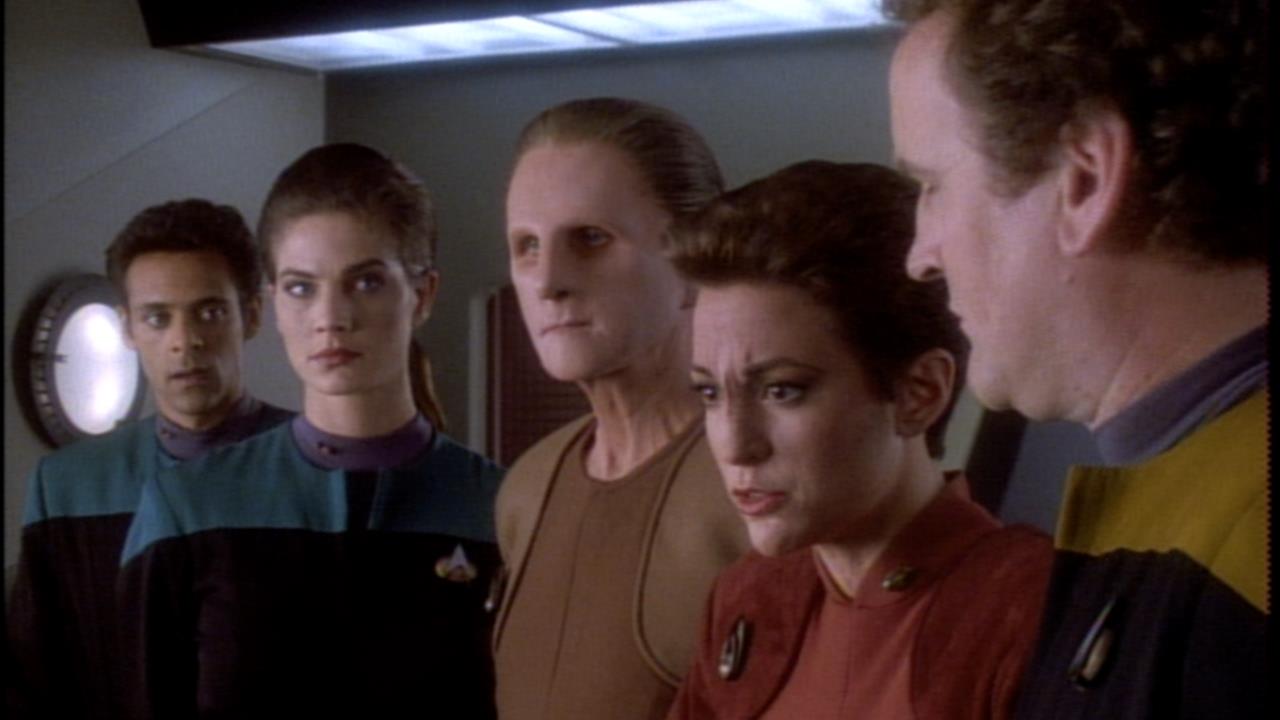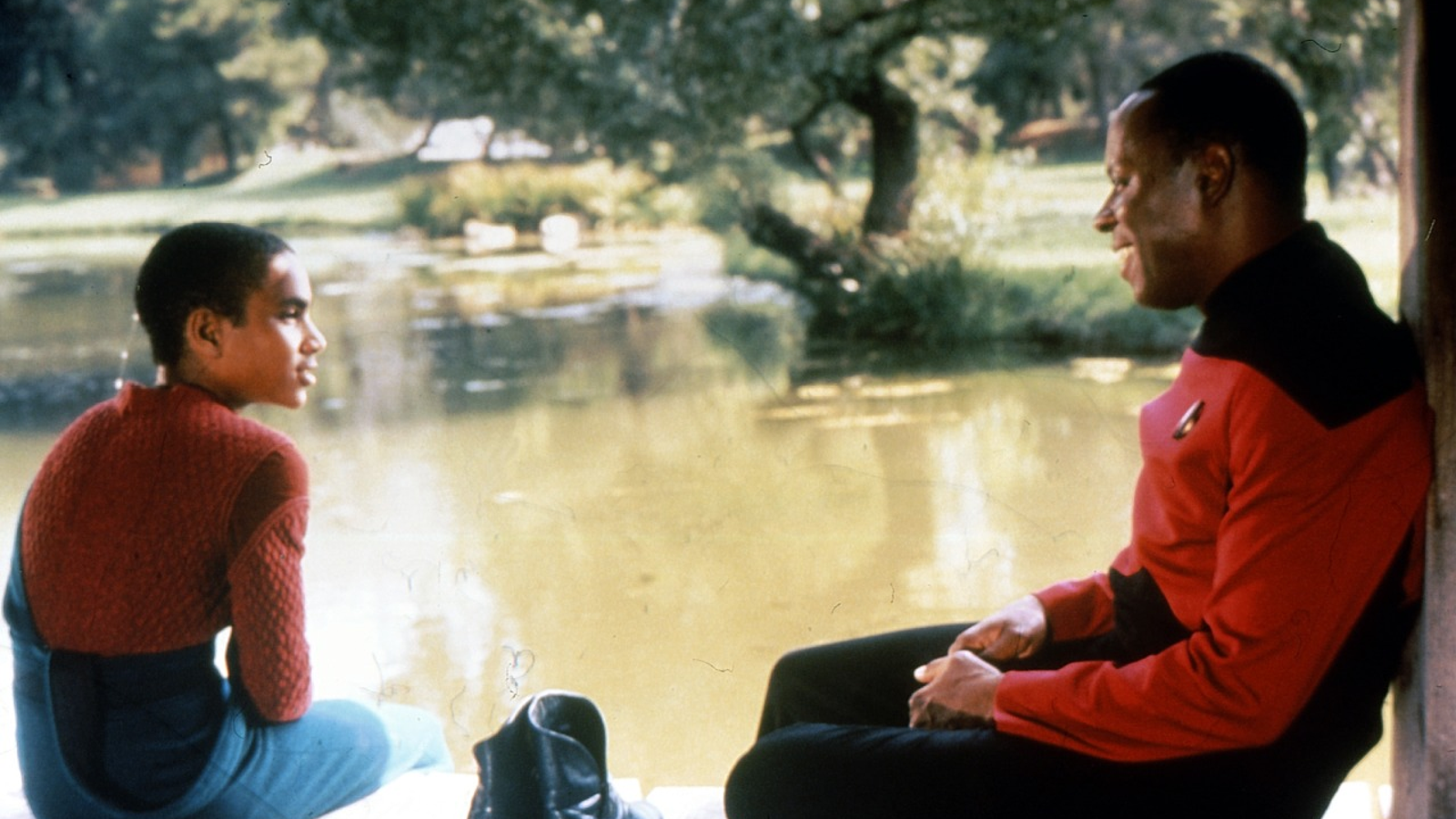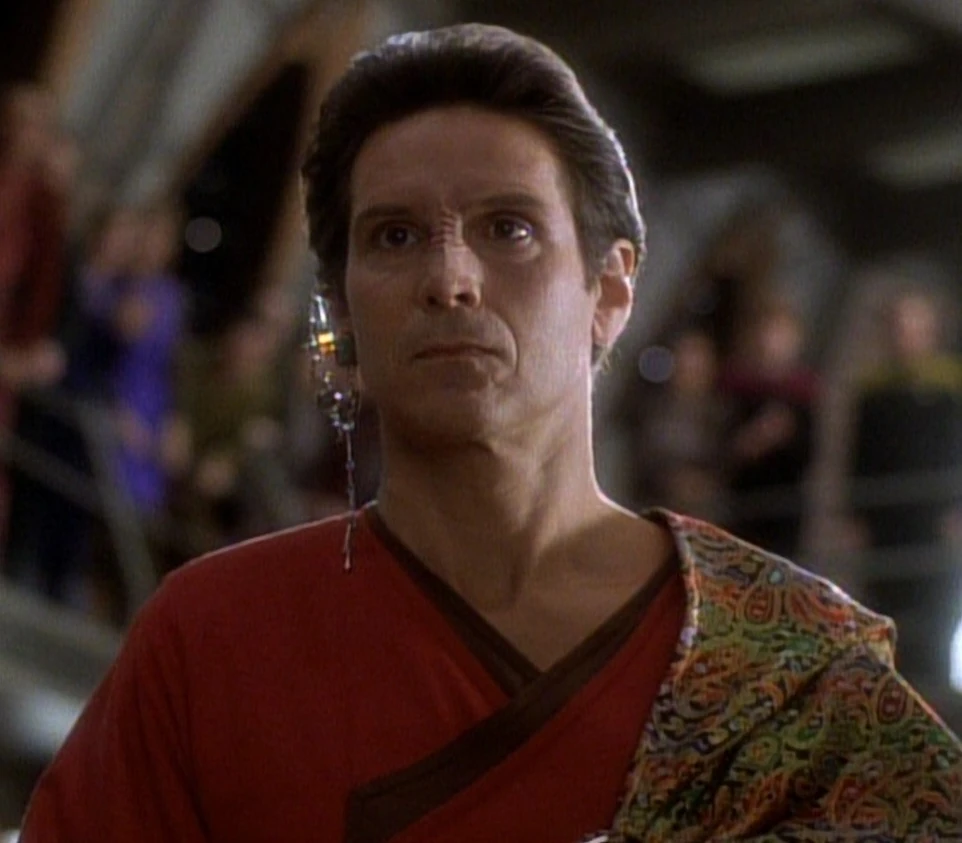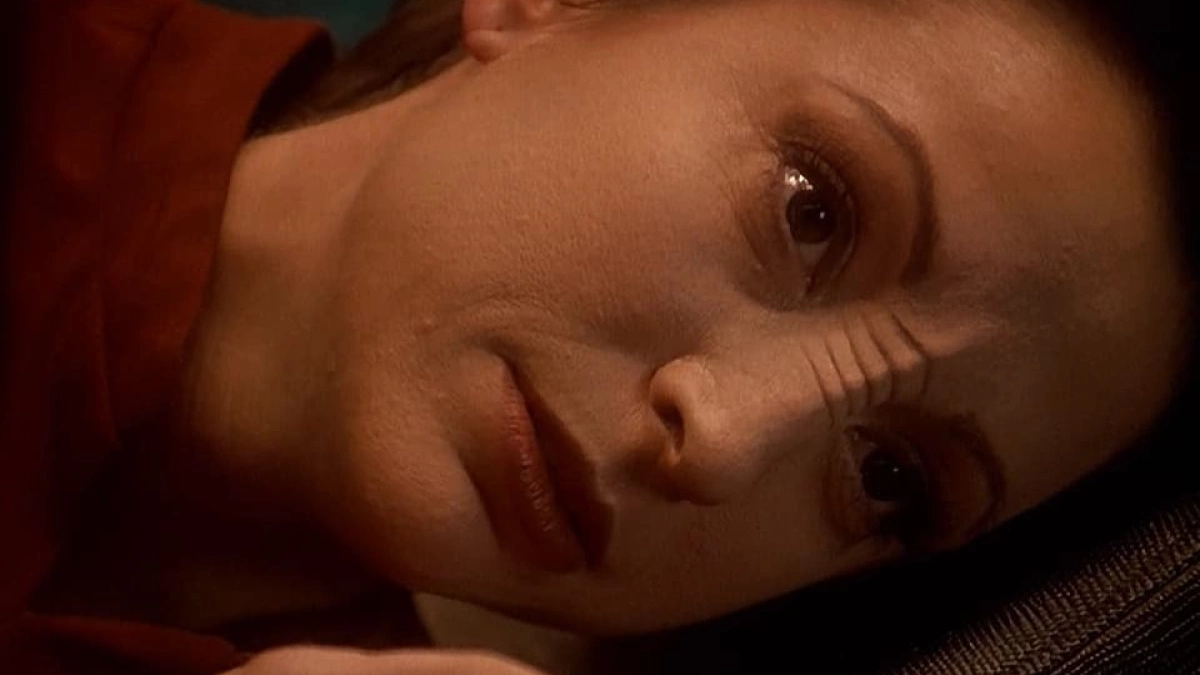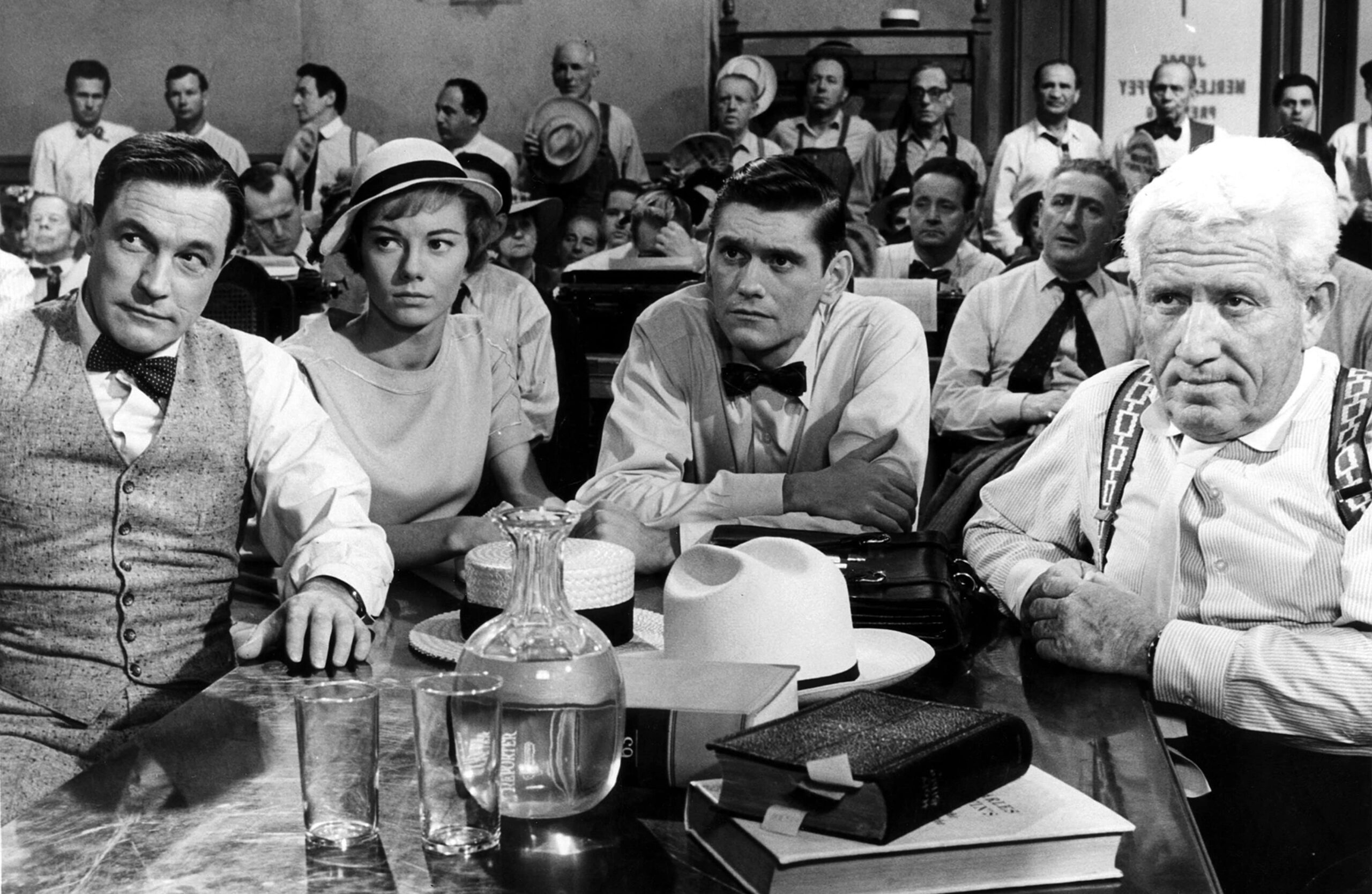‘Star Trek: Deep Space Nine’s “In the Hands of the Profits,” and the Danger of Extremism
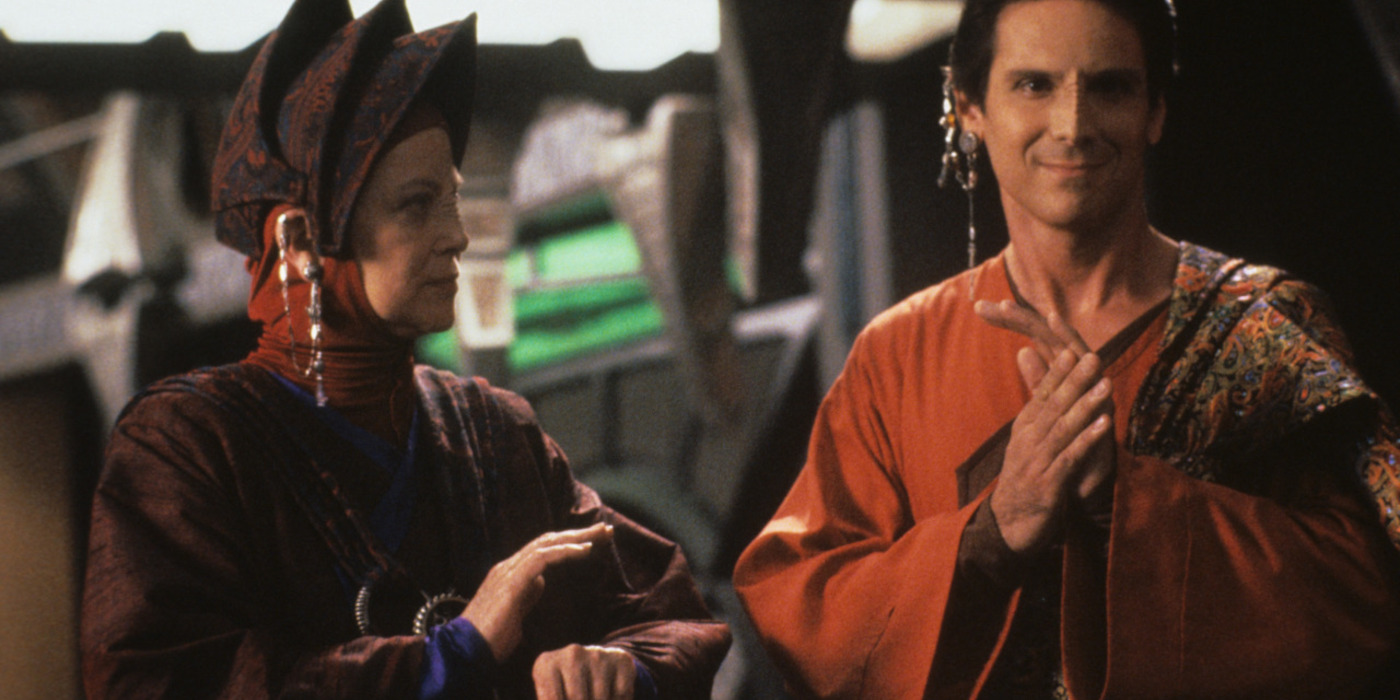
For fifty years, Bajor faces endless suffering during the Cardassian Occupation. Star Trek: Deep Space Nine shows the greater dangers after.
Star Trek: Deep Space Nine begins after the Cardassians vacate the once-paradise known as Bajor after fifty years of military occupation. The Cardassians brutalize the Bajoran people. They take their political power, their resources, and their very way of life. And towards the end of the Occupation, slavery and oppression turn to outright genocide.
Then the Cardassians leave. And what they leave behind is a world and its people ravaged. For most of those still alive, there is little or no memory of a free Bajor. How can a world rebuild if it has no idea what it is building back to?
One of the few consistent aspects of Bajoran life that survives during this time is their faith. So it’s no surprise that the admittedly weak provisional government that rises to power in the wake of Cardassia’s departure is profoundly influenced by religious leadership.
As a result, faith plays an enormous role in both what and who drives Bajor’s reconstruction. Add the sudden appearance of the only stable wormhole in existence, one which holds beings the Bajorans see as gods, and the capacity for religious extremism emerges.
That extremism first comes to a head in the DS9 season one finale “In the Hands of the Prophets”. It’s worth examining the events of that episode now.
“In the Hands of the Profits”
Star Trek: Deep Space Nine sometimes struggles in its early seasons because of the stationary orbit of its setting. Conversely, “In the Hands of The Prophets” works specifically because of the station’s location–the mouth of the wormhole. Or, as it’s thought of by many Bajorans: the Celestial Temple of the Prophets.
Keiko O’Brien teaches children on Deep Space Nine. Those children include humans, Bajorans, Ferengi, and others. And her teaching includes discussions of the wormhole. This lesson seemingly attracts the attention of orthodox leader Vedek Winn who feels that discussing the wormhole without discussing the Prophets as blasphemy.
Winn protestations have a cascade effect on the station. Keiko’s Bajoran students leave as debates over how to handle the issue intensify. Then the unthinkable happens: the school is bombed. And while no one is inside, the violent message is clear: ignore Bajoran faith at your peril.
However, it isn’t until Commander Sisko seeks the aid of Vedek Bareil, the religious leader most likely to become the new Kai, that Winn’s true motivations become clear. Bareil comes to Deep Space Nine in order to bring an end to the violence–exactly as Winn hopes he would.
Winn stirs up religious extremism as a means to convince Neela, a Bajoran engineer, to assassinate Bareil. Neela believes she is protecting Bajoran religious freedom. In actuality, she is only paving a path for Winn to become the new Kai.
It nearly works. In many versions of events, it would have worked. Let’s talk about why, in this case, Winn’s attempts to capture power are stymied.
Ben Sisko Teaches His Son
The most important thing Star Trek: Deep Space Nine does during “In the Hands of the Prophets” is acknowledge the importance of faith on Bajor without demonizing it. That’s not to say it defends the right of religious freedom uncritically. On the contrary, it acknowledges that the defense of faith can be a tactic both for ill and for good.
When Jake Sisko complains to his father about what he perceives as backward Bajoran believes, Ben challenges him. “You’ve got to realize something, Jake,” he says. “For over fifty years, the one thing that allowed the Bajorans to survive the Cardassian occupation was their faith. The prophets were their only source of hope and courage.”
Sisko also acknowledges his defense of Bajoran faith as being in both his and the Federation’s best interests, too. “It may not be what you believe, but that doesn’t make it wrong,” Ben tells his son. “If you start to think that way, you’ll be acting just like Vedek Winn, only from the other side. We can’t afford to think that way, Jake. We’d lose everything we’ve worked for here.”
The question becomes: how does Sisko challenge a suddenly powerful leader within the Bajoran faith without being seen as attacking the core tenets of that faith?
Winn and Bareil
When Keiko O’Brien comes to Ops seeking aid in her struggles with Vedek Winn, she expects complete support. Imagine her surprise when Major Kira Nerys, the station’s liaison to the Bajoran provisional government, says she agrees with Winn. “Some might say pure science, taught without a spiritual context, is a philosophy, Mrs. O’Brien,” Kira tells Keiko.
Vedek Winn holds some sway with Major Kira because Kira needs faith to endure. As a freedom fighter from a young age, Kira spends much of her first 26 years of life hiding in swamps and hills, fighting for Bajoran independence. Even victorious skirmishes have their price. Sometimes Kira finds herself killing Cardassian civilians, something even in a free Bajor she struggles to reconcile with.
We can assume Winn holds even more sway with Neela, who ultimately attempts to assassinate Bareil. But just as interesting is Bareil’s even larger influence of Bajor as a whole. After all, Winn wouldn’t try to have Bareil killed if he weren’t so powerful.
Bareil is a manipulator like Winn. However, unlike Winn Bareil does not hide his intentions from Sisko nor does he act out of selfishness. Bareil does not necessarily want to be Kai so much as he doesn’t want a destabilizing element like Winn to hold that enormous responsibility.
Bareil works with Sisko for several reasons, one being that Sisko is a reluctant Bajoran religious figure himself. But mostly Bareil sees that Sisko has that rare ability to divine when to get involved in Bajoran affairs and when to steer clear. Both Sisko and Bareil seek a stable Bajor.
Winn, by contrast, seeks power through fear–not unlike the Cardassians.
Kira’s Faith
At the end of “In the Hands of the Prophets” Kira and Sisko have an illuminating conversation. Kira realizes Winn cares less about Bajoran faith and more about power when she discovers that the debates, the boycotts, and the bombing are all an effort to get Bareil to the station. It’s all a game to Winn and she does not care who gets hurt in the process.
“I envied Vedek Winn because she was a true believer,” Kira tells Sisko. “I wanted my faith to be as strong as hers.” Sisko answers: “Maybe it is.”
I think Kira Nerys’s faith is stronger than almost anyone’s on Bajor. It is certainly stronger than Winn’s. We’ve talked about this in the past, but what drives Kira most is the desire to see Bajor flourish again by being a part of the universe, not separate from it. And it’s Kira’s faith that helps her fight for that vision even in dark times.
A Matter of Intention
“In the Hands of the Prophets” is an episode in part about the dangers of extremism, especially during unstable times. The provisional government on Bajor is easily swayed to the point of toppling completely.
Someone like Vedek Winn who will do anything to seize power runs the risk of turning Bajor towards exclusionary policies. And a Bajor divided by religious extremism exists apart from the Federation and is therefore easily occupied again. That may not be Winn’s intention, but those are the likely results.
At the inception of “In the Hands of the Prophets” the intention was to tell an Inherit the Wind story. That play dramatizes the Scopes Monkey Trial. And while there are parallels, it’s worth noting that this episode aired in 1993, the same year as the World Trade Center Bombing and the tragedy in Waco, Texas.
Good storytelling is a living document. “In the Hands of the Prophets” intended to speak to religious opposition to teaching Darwinism in school, but it wound up also speaking to destabilizing events at the time it aired.
When I first outlined this article, I saw a parallel between the bombing of Keiko O’Brien’s school and the present-day bomb threats against schools and hospitals that provide supportive care to transgender children in America. Between just then and now there are many more immediate, present-day analogs to the events of “In the Hands of the Prophets”.
The message of this story will always be important: a critical eye toward faith is not inherently a disrespectful one. On the contrary, it is necessary to question the way faith is used to direct culture in order to protect both people and faith itself.

